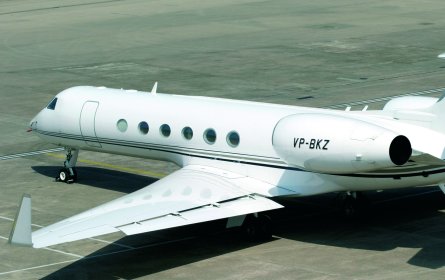Kate Sarsfield in London
|
| Bermuda is home to the largest fleet of business aircraft in the UK |
Air Safety Support International (ASSI), a subsidiary of the UK Civil Aviation Authority, is urging owners and operators of business aircraft registered in the nine UK overseas territories (OT) to respond to a set of new proposals for the regulatory oversight of corporate aviation that are earmarked for implementation next year.
The new proposals, which enter a consultation process in September, are part of a wider remit issued by the International Civil Aviation Organisation (ICAO) to standardise regulations and requirements throughout the OTs, namely Anguilla, Bermuda, British Virgin Islands, Cayman Islands, Falkland Islands, Gibraltar, Montserrat, St Helena and Dependencies and the Turks and Caicos Islands.
Bermuda and Cayman account for the bulk of the OT-registered business jets with a combined fleet of around 340 aircraft. “Our aim is to restore full regulatory responsibility to all the OTs as quickly as their capabilities allow,” says ASSI chief executive Rod Dean. These proposals are part of a larger project to establish a comprehensive and integrated regulatory structure that includes changes to the Air Navigation (Overseas Territories) Order, and are being implemented through a set of “one system covers all” overseas territories aviation requirements (OTARS) that are ICAO-compliant.
The majority of the regulations and requirements covering commercial operations, certification, maintenance and training, personnel and infrastructure, for example, have been or are in the process of being rolled out throughout the OTs, with the exception of OTAR 125 corporate aircraft operations, Dean says.
“The governors of the territories, through their aviation authorities, must satisfy themselves that the business and corporate aviation operators registered in their territories are operating to an acceptable level of safety.” In doing so the UK government can discharge its regulatory duty and through ASSI limit its responsibility to oversight.
The proposed requirements for OTAR 125 will apply to non-commercial flights conducted with an aircraft with a maximum take off weight (MTOW) of more than 5,600kg (12,330lb) and an approved seating configuration of 10 passengers or more; or certificated for operation with a minimum crew of two or more pilots when used for business aviation purposes and equipped with turbine engines or when used for any other purpose and equipped with turbojet engines; including very light jets.
The proposals also include: helicopters with a MTOW of more than 3,180kg seating six or more passengers certificated for operation with a minimum of two crew; flights conducted with a tilt-rotor; and any business aviation flight where the operator has an active fleet of two or more aircraft.
“A number of proposals have been suggested,” Dean says, “but we are recommending that we turn industry best practice, based on the International Business Aviation Council’s voluntary standards, into mandatory requirements to be implemented by all operators.”
Source: Flight International

















